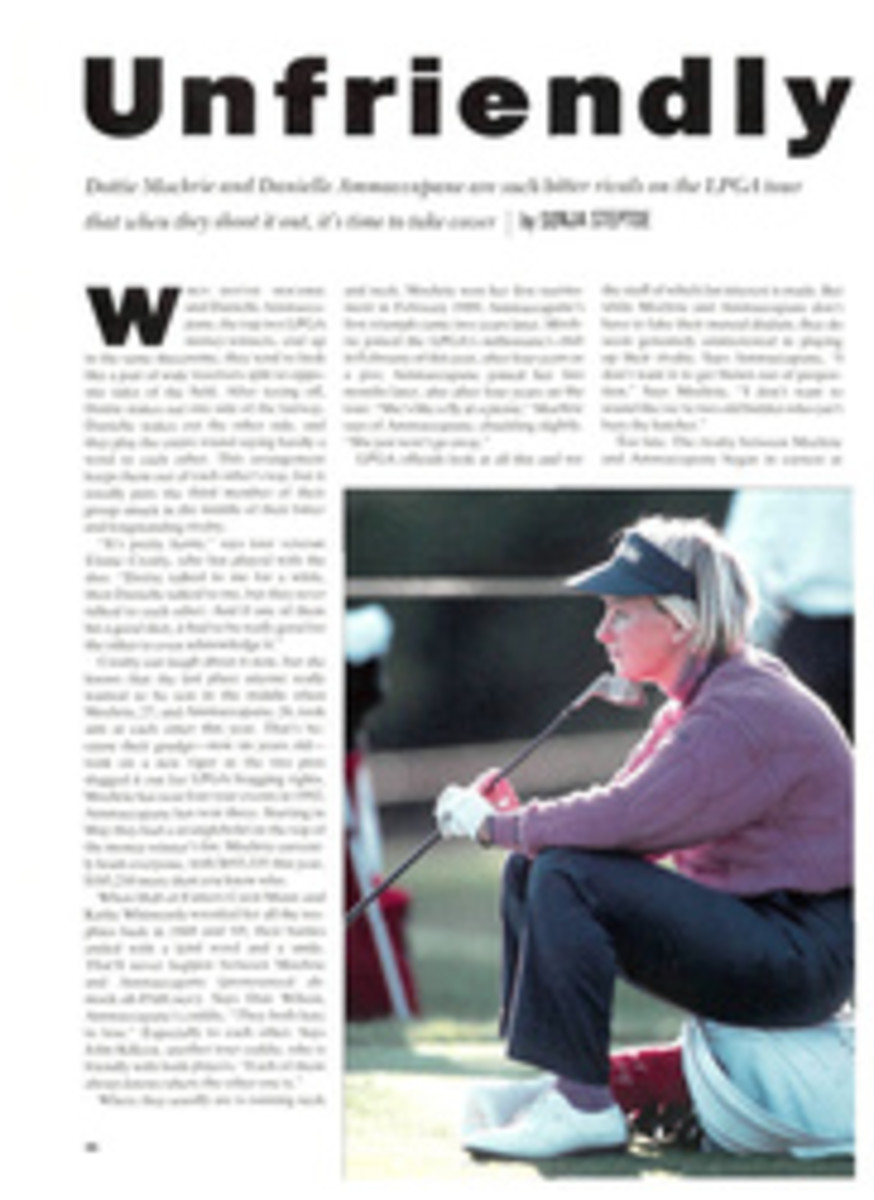
A Coach's Brush with Fame
Near the Easel in his new office, University of Delaware football coach Harold (Tubby) Raymond keeps a box filled with artists' brushes and tubes of acrylic paint. "Some of those brushes," he says, "have been around since my first painting."
They look it, too—crusted, dried-out old things, covered in paint and ready for the trash long ago, except the brushes represent a lot of history. Since the mid-1960s (Raymond doesn't recall exactly when), during the football season the 65-year-old coach has painted a portrait of at least one senior player every week and hung the portrait on the team's locker room wall on Thursday. "He's no Michelangelo," says Delaware sports information director Scott Selheimer, "but for a football coach he's pretty good."
Raymond happens to be a pretty good football coach, too. In his 39 years at Delaware, 27 as head coach, he has won three national championships and has a career record of 214-85-2 (as of Sept. 20). To Delaware fans he is football.
Every Wednesday during the season, when the weekend's game plan is complete, Raymond walks into his office, shuts the door, pulls out a photo of a senior and paints his portrait on a piece of posterboard. Next to the player's head Raymond then paints the words "Dick the chicken" (the team's nickname is the Fightin' Blue Hens) along with a message that is less than inspirational, such as "Dick says wake up on defense" or "Dick says get back at New Hampshire for last year."
Neither Raymond nor anyone else on the football staff knows why the chicken is named Dick.
Nor docs Raymond probe his own creative talents. Ask him what his style is, he says, "I just paint. It's a great catharsis." Ask him his influences, he lists none.
His story goes like this: When Raymond was a boy in Flint, Mich., he began drawing, and by the time he was 12, Tubby—who at the time carried a few too many pounds and thus earned a lifelong nickname—was taking art classes on Saturday mornings. After playing football and baseball at the University of Michigan, Raymond accepted an assistant's job at Delaware in 1954 under coach Dave Nelson, who in 1956 asked him to turn out a drawing for the locker room to lighten things up. The result was a cartoon of President Dwight Eisenhower, then in his reelection campaign against Adlai Stevenson, saying "We got a problem." Next to Ike, Raymond painted Dick, who said, "We got a problem too."
A few years later, before he had become head coach, Raymond started doing his portraits of seniors, and since then he has painted more than 400 players. He has also executed some special portraits. In 1981 he painted a touching two-by four-foot action portrait of Chuck Hall, Delaware's alltime leading rusher, who died of Hodgkin's disease in 1973 at age 24. Today it hangs in the weight room that's named after Hall. And in 1990 he did a self-portrait for the cover of the media guide ("I look dreadful and depressed." he says of the picture, explaining that that was the year in which Sue. his wife of 39 years, died).
Raymond's harshest critics are, of course, his subjects. "His percentage is pretty good," says senior quarterback Bill Vergantino. "Usually, you can tell who he's painted."
"It's like 90 percent," says Andy Johnson, a senior tight end and offensive tackle, "though sometimes he hits the crossbar. I think once he got a guy's color wrong." But seriously, Johnson adds. "I don't know of anything more personal a coach could do for a player."
It's part of what makes Delaware special. Three years ago the athletic department included six head coaches who had held their jobs for 25 years or more. Offensive coordinator Ted Kempski is currently in his 25th season. He played for Raymond in 1961 and '62 before accepting an assistant coaching job in '68. "He doesn't remind me of an artist, yet he's very creative," Kempski says of his longtime friend. "He always finds new ways to inspire people." At practice Raymond looks across the field at Kempski and says, "God, to have a guy like Ted at your side, well...."
But Raymond has never painted a portrait of Kempski. Would Kempski like one? "I wouldn't ask for something like that," he says.
Maybe it's time for those old brushes to paint an old friend.
PHOTO
DAVID FIELDS
Since the mid-'60s, Raymond has done more than 400 portraits.

